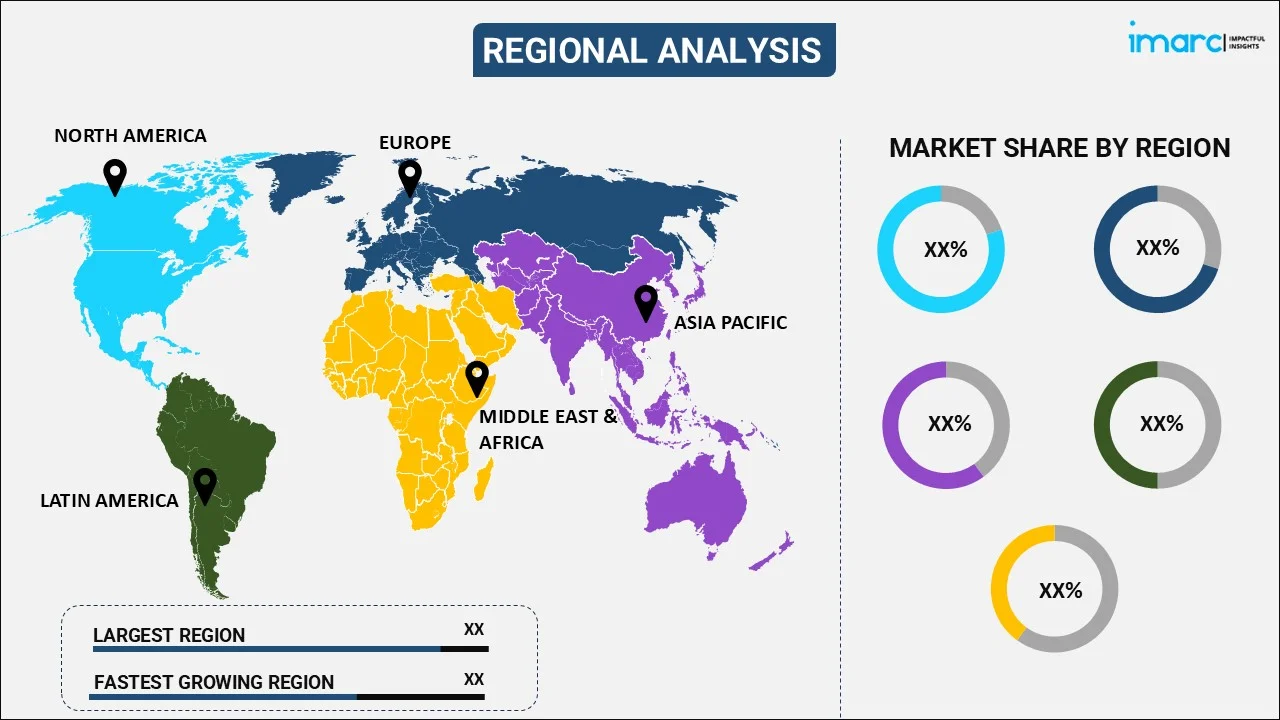
Lung Marker Market Report by Cancer Type (Non-Small Cell Lung Cancer (NSCLC), Small Cell Lung Cancer (SCLC)), Marker Type (EGFR, EML4-ALK, KRAS, BRAF, and Others), End User (Hospitals, Diagnostic Labs, and Others), and Region 2025-2033
Market Overview:
The global lung marker market size reached USD 482.2 Million in 2024. Looking forward, IMARC Group expects the market to reach USD 1,104.6 Million by 2033, exhibiting a growth rate (CAGR) of 9.6% during 2025-2033.
|
Report Attribute
|
Key Statistics
|
|---|---|
|
Base Year
|
2024
|
|
Forecast Years
|
2025-2033
|
|
Historical Years
|
2019-2024
|
|
Market Size in 2024
|
USD 482.2 Million |
|
Market Forecast in 2033
|
USD 1,104.6 Million |
| Market Growth Rate 2025-2033 | 9.6% |
Generally, four major types of lung markers, including EGFR, EML4-ALK, KRAS, and BRAF, are used during lung intervention procedures or lung surgeries and diagnosis. Furthermore, the markers are used to detect, diagnose, predict, and monitor the tumor, based on which the treatment is prescribed to the patient. Lung markers are only used as an additional tool to identify cancer along with several imaging tests and biopsy. Owing to this, lung markers are extensively used in thoracoscopic surgeries across hospitals, ambulatory surgical clinics, and specialty clinics, among several other healthcare facilities.
The rising demand for lung markers can be attributed to the high prevalence of respiratory disorders, such as pleural effusion, pleural mesothelioma, pleural plaque, etc., due to the increasing air pollution levels, across the globe. Besides this, the high exposure to passive smoking, along with a family history of lung cancer further drives the number of patients suffering from lung cancer, thereby augmenting the demand for lung markers. Additionally, the surging geriatric population, along with the hectic consumer lifestyles leading to a high smoking rate, further accelerate the risks of several respiratory disorders. Apart from this, the increasing healthcare expenditures by various governments for early diagnosis and pre-treatment of life-threatening diseases, such as lung cancer, are also propelling the rising utilization of lung markers at a global level. Furthermore, rising investments in several research and development activities in the field of lung cancer diagnostics and treatment is further catalyzing the demand for lung markers. In addition to this, the increasing usage of lung markers in hospitals, surgery centers, clinics, and their various applications in therapeutic purposes has also catalyzed the product demand.
Key Market Segmentation:
IMARC Group provides an analysis of the key trends in each sub-segment of the global lung marker market report, along with forecasts at the global, regional and country level from 2025-2033. Our report has categorized the market based on cancer type, marker type and end user.
Breakup by Cancer Type:
- Non-Small Cell Lung Cancer (NSCLC)
- Small Cell Lung Cancer (SCLC)
Breakup by Marker Type:
- EGFR
- EML4-ALK
- KRAS
- BRAF
- Others
Breakup by End User:
- Hospitals
- Diagnostic Labs
- Others
Breakup by Region:

- North America
- United States
- Canada
- Europe
- Germany
- France
- United Kingdom
- Italy
- Spain
- Russia
- Others
- Asia Pacific
- China
- Japan
- India
- South Korea
- Australia
- Indonesia
- Others
- Latin America
- Brazil
- Mexico
- Argentina
- Colombia
- Chile
- Peru
- Others
- Middle East and Africa
- Turkey
- Iran
- Others
Competitive Landscape:
The competitive landscape of the industry has also been examined with some of the key players being Abbott Laboratories, Thermo Fisher Scientific Inc., Agilent Technologies, Inc., Beckman Coulter, Inc., Fujirebio Europe N.V., Hologic, Inc., F. Hoffmann-La Roche Ltd, Siemens Healthineers, and BioSpace, Inc.
Report Coverage:
| Report Features | Details |
|---|---|
| Base Year of the Analysis | 2024 |
| Historical Period | 2019-2024 |
| Forecast Period | 2025-2033 |
| Units | Million USD |
| Segment Coverage | Cancer Type, Marker Type, End-User, Region |
| Region Covered | Asia Pacific, Europe, North America, Latin America, Middle East and Africa |
| Countries Covered | United States, Canada, Germany, France, United Kingdom, Italy, Spain, Russia, China, Japan, India, South Korea, Australia, Indonesia, Brazil, Mexico, Argentina, Colombia, Chile, Peru, Turkey, Iran |
| Companies Covered | Abbott Laboratories, Thermo Fisher Scientific Inc., Agilent Technologies, Inc., Beckman Coulter, Inc., Fujirebio Europe N.V., Hologic, Inc., F. Hoffmann-La Roche Ltd, Siemens Healthineers, and BioSpace, Inc. |
| Customization Scope | 10% Free Customization |
| Post-Sale Analyst Support | 10-12 Weeks |
| Delivery Format | PDF and Excel through Email (We can also provide the editable version of the report in PPT/Word format on special request) |
Key Questions Answered in This Report:
- How has the global lung marker market performed so far and how will it perform in the coming years?
- What has been the impact of COVID-19 on the global lung marker market?
- What are the key regional markets?
- What is the breakup of the market based on the cancer type?
- What is the breakup of the market based on the marker type?
- What is the breakup of the market based on the end user?
- What are the various stages in the value chain of the industry?
- What are the key driving factors and challenges in the industry?
- What is the structure of the global lung marker market and who are the key players?
- What is the degree of competition in the industry?
Need more help?
- Speak to our experienced analysts for insights on the current market scenarios.
- Include additional segments and countries to customize the report as per your requirement.
- Gain an unparalleled competitive advantage in your domain by understanding how to utilize the report and positively impacting your operations and revenue.
- For further assistance, please connect with our analysts.
 Inquire Before Buying
Inquire Before Buying
 Speak to an Analyst
Speak to an Analyst
 Request Brochure
Request Brochure
 Request Customization
Request Customization




.webp)




.webp)












